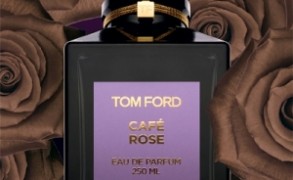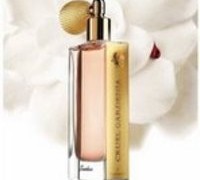Amber, ambergris, ambreine, Ambroxan, Ambrox…. These terms found in fragrance descriptions are often among the most confusing, since the only amber most of us know is the fossilized resin with no scent whatsoever. In perfumery, the amber fragrance family is among the most important. As a perfumery student, like many of my colleagues, the first fragrance accord I learned to make was amber, a dark, voluptuous abstract composition. Since the topic of amber in fragrances is a large one, I decided to break it up into two posts. In the first of the “Amber Perfume Notes” articles, I will talk of ambergris. The second part talks about the sweet amber, which is usually based on labdanum.
Precious perfume materials like oud, sandalwood, musk, and rose are surrounded by much mystery and lore, but none is more so than ambergris. Even in ancient times, it was a highly valued material, very much sought after for its medicinal, aphrodisiac and fragrant properties. Meaning “grey amber” in French, ambergris looks like dark grey or black lumps. The touch of a warm hand releases its unique fragrance—sweet, musky, warm, with a salty facet of seaweed and cured tobacco leaf. The most unusual aspect of ambergris is its unique radiance and tenacity. While the scent itself is not heavy or overwhelming, the sillage of ambergris is one of the most extraordinary.
The irony is that such a beautiful fragrance comes from what is essentially a sperm whale’s version of a hairball. Some species of sperm whales, Physeter macrocephalus, are susceptible to a digestive track irritation caused by their diet of squid. Squid beaks and other indigestible parts cause the whale to produce a substance which it periodically excreted along with the offending matter. Directly from whale’s stomach, the sticky black matter is quite rank, but after aging by the sun and ocean, it acquires an ineffable salty-musky aroma.
Since ambergris is derived from animals, naturally a question of ethics arises, and in the case of ambergris, it is very important to consider. Sperm whales are endangered species, whose populations started to decline as far back as the 19th century due to the high demand for their highly emollient oil, and today their stocks still have not recovered. Although top quality ambergris is the regurgitated substance, a waste produced by the whale, the matter can also be obtained from a whale’s stomach and then transformed into ambergris. Unfortunately, for an average consumer it is difficult to tell what ambergris they are getting: naturally found or illegally harvested.
In the US, the status of ambergris is somewhat vague–the importation of marine mammal products in the USA has been banned since 1972, according to the Convention on International Trade in Endangered Species of Wild Flora and Fauna (CITES); however, ambergris is not mentioned directly. Many marine researchers are concerned that even the trade in naturally found ambergris can be harmful by creating further incentives to hunt whales for this valuable substance. As a fragrance consumer, you can assume that there is no natural ambergris in your perfume bottle, unless the company advertises this fact and unless you own vintage fragrances created before the 1980s. Ambergris is extremely rare and expensive, and big fragrance suppliers that make most of the fragrances on the market today do not deal in it for reasons of cost, availability and murky legal issues.
Although the natural substance has a radiance and subtlety that is difficult to approximate, there are a number of interesting synthetic replacements. Ambrox (or ambroxan), Cetalox, Grisalva, and ambreine are only a few of the modern ambergris notes, besides the various other single and compound notes that figure in fragrances descriptions as crystalline amber, crisp amber, solar amber, etc. Ambroxan is a musky-woody, sweet note, with an interesting quality that oscillates between crisp and velvety. Its effect can be felt in Frederic Malle Géranium pour Monsieur and Portrait of a Lady, Robert Piguet Calypso, Dolce & Gabbana Light Blue, and Lancôme Mille et Une Rôse. Ambrein (ambreine), a chief component of ambergris, is a sweet, warm, persistent note with tobacco and caramel accents. It is widely used in accords with woods, musks and other animalic notes to give an opulent, seductive facet. Some examples include Caron Infini, Parfum d’Empire Ambre Russe, Annick Goutal Quel Amour and Jean-Paul Gaultier Classique.
Finally, I would like to mention three fragrances that to me capture the elusive sweet and salty richness of ambergris. They are fantasies, created by perfumers through a careful balancing of notes. Rich and transparent are fragrance terms that rarely exist side by side, but Christian Dior Dune juxtaposes citrus freshness with the sweet darkness of amber, moss and patchouli. There is a salty marine note that courses through Dune’s structure and suggests an ambergris impression. Serge Lutens Muscs Koublaï Khan creates an ambergris illusion through its interplay of musk, civet and salty skin. It is rich and dark, with a velvety drydown that is simultaneously seductive, caressing and haunting. Hermès Eau des Merveilles is my favorite ambergris fantasy—a radiant etude of bleached woods, salty sand and dried seaweed tendrils. Wearing it is like stepping into a Cézanne’s painting of a winter beach; you can almost feel the chilly salty breeze on your skin.
Photograph: ambergris lump

















21 Comments
Maria: Thank you for this article! Amber is something I find confusing, so I look forward to more posts on this topic. I hope that you will have something about your favorite amber fragrances too. Also, I love Ambre Sultan. Is it supposed to smell like ambergris? September 23, 2011 at 12:02pm
dleep: What a great article! Very informative. September 23, 2011 at 12:22pm
sweetlife: Lovely, V. And I especially appreciate the breakdown of the synthetic substitutes.
I got to smell some very old ambergris tincture when I visited Mandy Aftel in the studio. It was an incredible smell–like nothing else, and yet oddly familiar from my vintage perfumes. September 23, 2011 at 3:16pm
Andy: Thank you so much! Amber and ambergris give me some confusion too. The analysis of synthetics and connecting their effect in various fragrances is also very helpful for understanding the separation between ambergris and modern amber accords. I find it very interesting that the first accord you learned was an amber. I would have assumed for some reason that they would start out with top note accords, maybe because they are less tenacious. Then again, considering the commercial focus on great top notes while ignoring the base, it makes sense. September 23, 2011 at 4:52pm
Victoria: I will definitely include separate posts on some of my favorite amber fragrances that are not just animalic-ambergris ones like the perfumes I mentioned in this post.
Ambre Sultan is my favorite too. In fact, it is a good illustration for the non-animalic ambers, about which I will write next week. September 23, 2011 at 2:39pm
Victoria: Thank you! Glad that you liked it. September 23, 2011 at 2:39pm
Victoria: That’s really just the tip of an iceberg. Today, there are so many ambergris inspired materials that they can be broken down in separate families. The ones I mentioned are the ones that actually get mentioned as such in the perfume descriptions.
Ambergris, sandalwood and various animalic notes are remarkably tenacious. Even if all else degrades, they retain their character. Those who know vintage fragrances will find these notes recognizable at once. I am not at all surprised that you did.
Wasn’t that antique ambergris tincture something else? September 23, 2011 at 3:20pm
sweetlife: I thought you might have smelled it, too! That and the ancient civet tincture. Like velvet… September 23, 2011 at 7:27pm
Paeonia_9: To think that something as coveted and beautiful as ambergris comes from a whale “hairball”…Nature never fails to amaze me!
Funny you should mention Portrait of a Lady. Just got a sample in the mail today. I’d assumed it would be a heavy fragrance from the notes, but somehow it really isn’t. Perhaps it’s that ambroxan crispness you describe that really lifts and illuminates all those “dark” notes so well? Either way, gorgeous stuff! September 23, 2011 at 7:53pm
Victoria: I think that it done this way, because the classical amber is quite simple. Mine had only 5 ingredients in it (none of them ambery in themselves, but put together they smells very much like sweet amber.)
Top notes are all important, you are right. Once one gets into the modern perfumery, learning how to weaves those long lasting fruity-citrusy notes becomes crucial. September 23, 2011 at 4:55pm
lily: Merveilles is just wonderful, I agree V. Great piece, thank you September 24, 2011 at 12:23am
Michael Pressler: After reading this article I can’t wait to sniff Merveilles! September 25, 2011 at 10:23am
Victoria: Very true! That one was wonderful too. Some materials age so well! September 25, 2011 at 2:11pm
Victoria: It also has Cashmeran, a woody musk that goes so well with those rich floral-oriental notes. I also feared that it might be too heavy, but as I have been wearing it, I find the fragrance to be quite radiant. September 25, 2011 at 2:12pm
Victoria: Thank you, Lily. Glad to see other Eau des Merveilles fans. 🙂 September 25, 2011 at 2:13pm
Victoria: Thank you, Lily. Glad to see other Eau des Merveilles fans. 🙂 September 25, 2011 at 2:13pm
Victoria: One of my favorites! I find that it is too heavy for warm weather, but in fall/winter, it is just perfect. September 25, 2011 at 2:14pm
Debbie: Thank you for a great post. I love amber (Dune, Amber Absolute, Eau des M, AS) but knew nothing about it until I read one of your articles a few months ago. Until that point I was really stumped as to how such a wonderful aroma came from a glass-like resin. I knew there had to be another explanation!
It’s been my scent obsession for around a year now – can’t wait to read your upcoming articles and fragrance suggestions. September 29, 2011 at 6:00pm
mike: found some ambergris in cornwall .no one beleives me ;loved your article would love to show you my photos, i really need some help !!! thanks mike x December 6, 2012 at 6:06pm
Selena: I’m doing a school project on the controversy between using ambergris in perfumes, or using the exotic balsam fir, would you mind giving me some information to use about ambergris, and about your job please? April 16, 2013 at 10:19am
Annette: Do you think Ambroxan or Ambrien is the sweet balsam-like fragrance used in Flex conditioner? Since there are several synthetic forms, which one would you guess Flex smells most like – assuming you have smelled Flex Conditioner before. Heard Flex’s off the market but can still close my eyes and remember the fragrance -without even having to smell it. I remember sweet balsam and maybe something a little spicy? I’m now guessing it was mainly based on something in the Ambergris family? January 10, 2017 at 2:11am